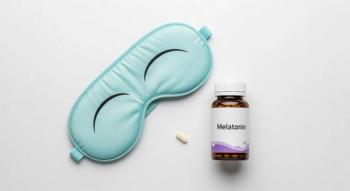These 6 Special Report articles cover substance use disorders (SUD) in both adolescents and adults.
The treatment of adolescents can be very challenging and often relies on nonpharmacological interventions, as described by Christopher Hammond, MD, PhD, and Pravesh Sharma, MD, in “Treatment Strategies for Substance Use Disorders in Adolescence.” Practicing psychiatrists will learn about important drug indications but should not avoid the FDA-approved medications for SUD-whether naltrexone for alcohol or buprenorphine for opiates. The life-threatening complications of SUD such as overdoses can be prevented in adolescents who are well-treated pharmacologically.
Providing pharmacotherapy for adolescent ADHD offers different challenges. The article “ADHD and Substance Use: Current Evidence and Treatment Considerations” by Chardeé Galan, MS, and Kathryn Humphreys, PhD, which you’ll find online, offers useful advice on making an accurate diagnosis of ADHD in patients with SUD and on treatment options. Stimulants may be problematic, particularly when a patient describes “self-medication” as the reason for his or her illicit stimulant abuse.
Continuing with adolescent SUD treatment, the online article by Christina Brezing, MD, and Frances Levin, MD, “Treatment for Cannabis Use Disorders,” looks at a topic that is becoming increasingly relevant as cannabis is legalized in many parts of the US. In addition, they remind us that synthetic cannabinoids are typically and inaccurately viewed by adolescents as equivalent to cannabis and its perceived medical safety. Thus, clinicians need to consider not only the parent drug, but also its more dangerous and deceptive synthetic cousins.
The online article by Smita Das, MD, PhD, MPH, and Judith Prochaska, PhD, MPH, “E-Cigarettes, Vaping, and Other Electronic Nicotine Products: Harm Reduction Pathways or New Avenues for Addiction?” provides a thoughtful and balanced discussion of this rapidly proliferating device. Clinicians need to know both sides of the ongoing debate contained in this article. E-cigarettes have been endorsed by Great Britain’s health authorities for harm reduction, while the FDA is developing ways to regulate their use for safety concerns.
“Benzodiazepines in Patients With Substance Use Disorders: Cautions, Strategies, and Rationale” by George Dawson, MD, provides clinicians with clear guidelines about 2 key issues: (1) Which patients should be given long-term benzodiazepines? and (2) What doses are appropriate for patients with affective and anxiety disorders, particularly those with comorbid SUD? Illicit uses of benzodiazepines include combinations with alcohol to get high or after alcohol to reduce withdrawal, with opiates to augment euphoria, and after stimulants to reduce withdrawal. Good clinical care requires knowing which of the anxiety disorders-PTSD, generalized anxiety, panic, somatization, or OCD-poses the greatest risk for lack of efficacy and concomitant abuse of benzodiazepines.
Finally, sleep disruptions often persist long after alcohol withdrawal. In “Understanding and Addressing Sleep Disruptions in Alcohol Use Disorders,” Kristen Schmidt, MD, and Bhanu Kolla, MD, provide a broad perspective on these disruptions, including genetic contributions. Overall, this problem is very relevant for clinicians and may be so problematic for patients with alcohol use disorder that it leads them to relapse.
Disclosures:
Dr. Kosten is JH Waggoner Chair and Professor of Psychiatry, Neuroscience, Pharmacology, Immunology, and Pathology at the Baylor College of Medicine in Houston, TX. Dr. Kosten reports no conflicts of interest concerning the subject matter of this article and of the Special Report.












